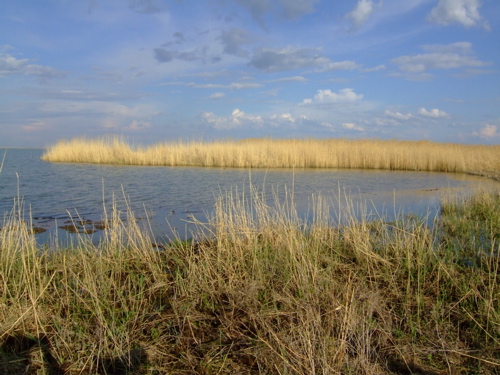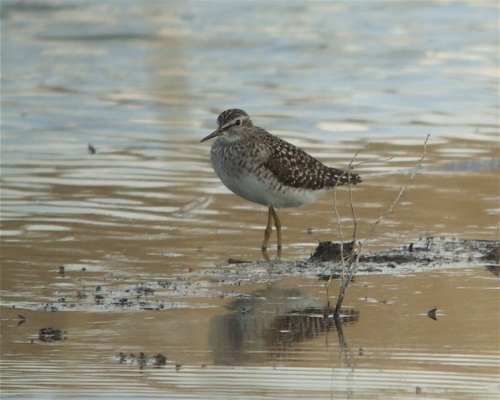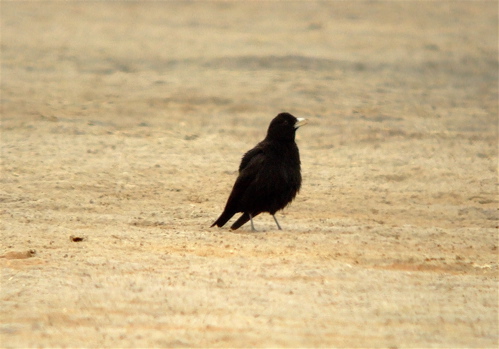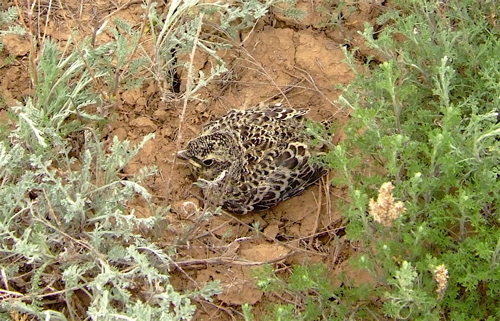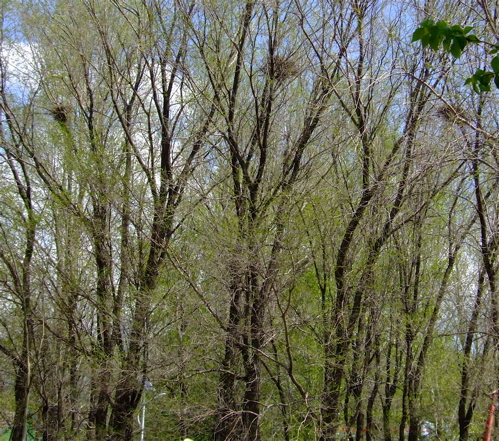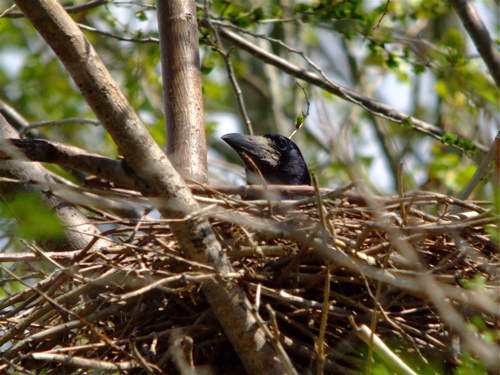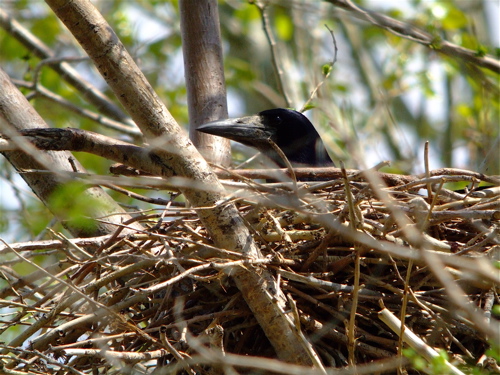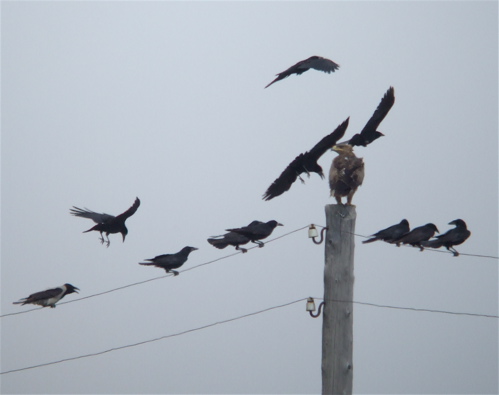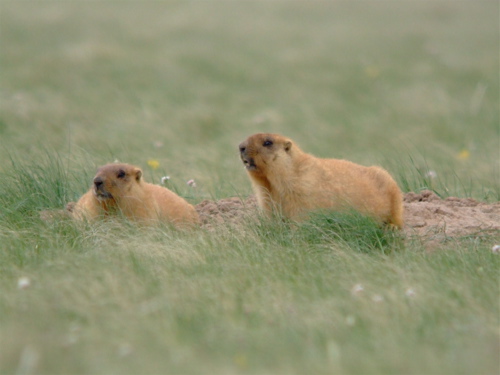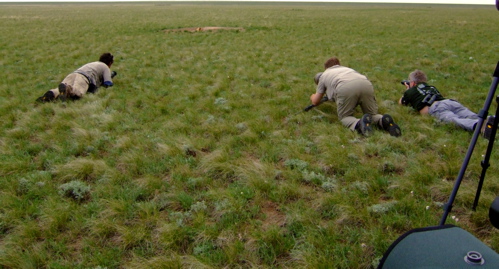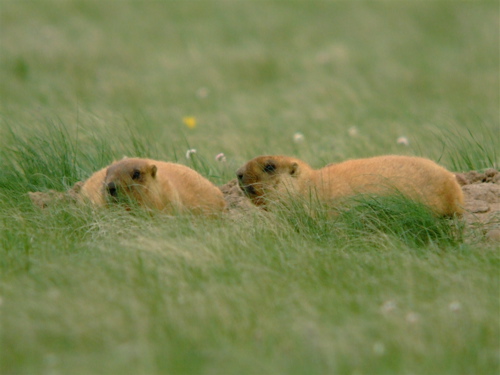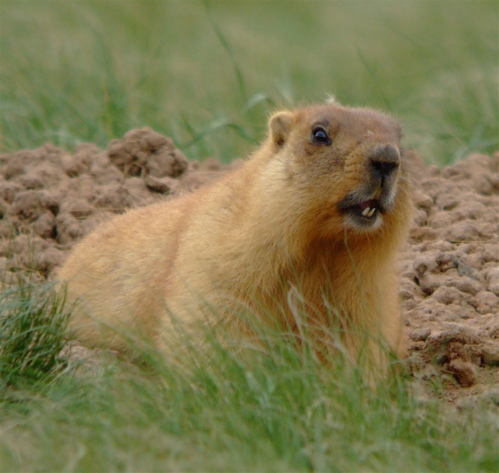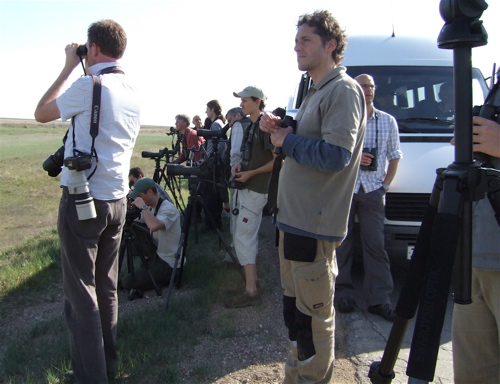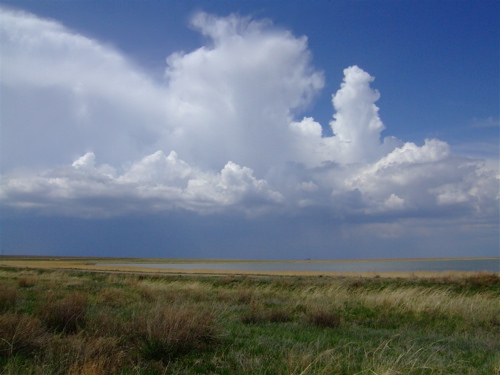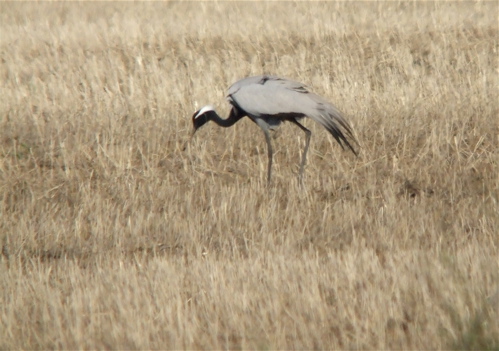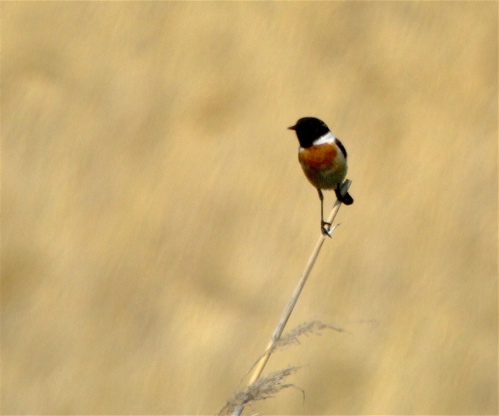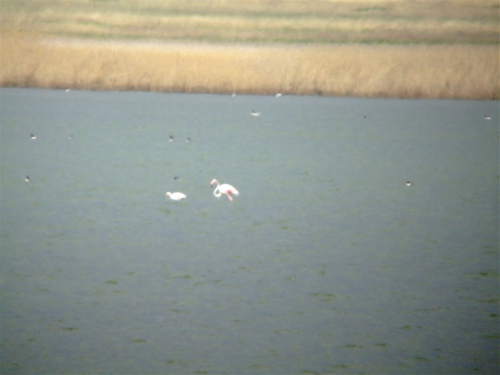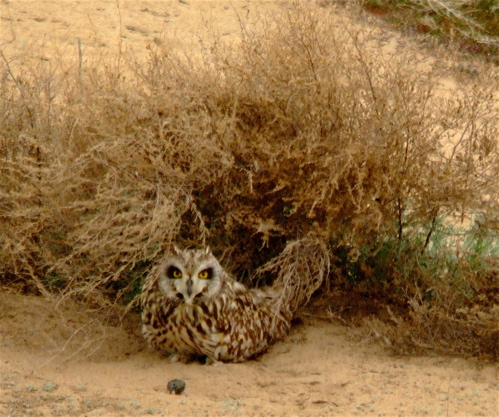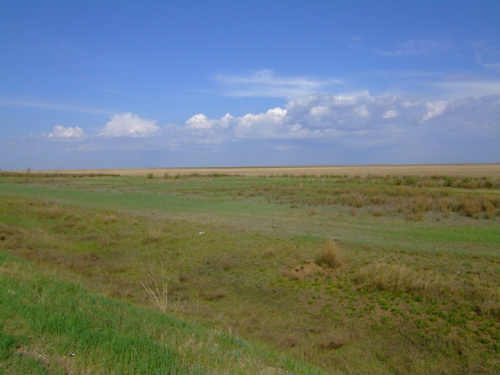Most of the time I was in Kazakhstan, I just kind of looked around with an overwhelming sense of gratitude and wondering, "How the heck did I get here?"
I also had some strange birding moments. Take the above wood sandpiper (it looks very similar to the yellowlegs we see in the US). This should have been a target species for me in it's native habitat. However, I had already seen one--almost a year to the day I took this photo on the Steppes. This time last year, Clay Taylor and I were on a digiscoping team at the World Series of Birding. Right before we arrived, a wood sandpiper had been reported in Delaware, so we both headed over to see it. And now, here Clay and I were watching it in it's natural environment. I looked at Clay and said, "Can you believe this, we saw this species last year."
"Yeah," he said, "3000 miles away."
Who would have thought that a year later we'd be in Kazakhstan watching it in it's native environment. Life is strange that way.
There were other birds too, like the European birders were always quick to point out the common cranes--a beautiful species...that I also saw last year in Nebraska--how weird, I should have been way more excited about that bird. Not that it wasn't cool to see, but just strange that there would be birds I had already seen as rarities in North America.
There were some odd challenges on this trip. As one of only three Americans in the group, I was totally in the minority and much different target birds than the many European birders. To them, lapwings, wagtails, and ruffs were common birds. To me, they were lifers. There are some birds I'm content to get a brief look and trudge on for more unique species, but there are some iconic birds like northern lapwing that I really wanted a good look at. I didn't get the look I was hoping for of a lapwing, but I'm sure I'll be in England at some point.
The European birders were very excited about black larks...and they were hard birds to get close to. Many wanted to get it's photo, but being a bird of open space, they were wary and it's hard to sneak up on a bird without any cover for you yourself to hide in. But it seemed as though we stopped for just about every black lark we passed.
The closest we got to a lark was this young one about ready to fledge. It used its cryptic plumage to blend in with the surrounding vegetation rather than fly away from potential predators on uncertain wings.
Meanwhile, a couple of the Brits thought I was nuts for wanting the bus to stop to stop for ruffs. These are a charismatic species of shorebird that sometimes make it to the US--it's rare bird worthy in my state, but it's a bird I have not managed to see. To have a chance to see one--let alone a whole flock was just too much. I asked the bus to stop for a photo. One of the Brit's said, "Oh, that's not much of a look, let's keep going."
"Oy," I said, "we've stopped for a bunch of black larks, we can stop or this girl's lifer ruff."
He was right, it wasn't the best look at a ruff--they're barely poking above the grass, but this was as good as it was going to get for me on this trip.
All part of the fun of negotiating birds on a trip. I could understand their logic. This would be like me leading a trip in North Dakota to go see a Baird's sparrow and someone was freaked out and wanted to stop because they just saw their lifer Baltimore oriole fly over the bus. My logic would be, "Orioles are feeder birds, we can get it later, let's go for the harder to see Baird's sparrow."
However, that person may not have another shot while they are in the country--all part of the fun and challenge of birding!

